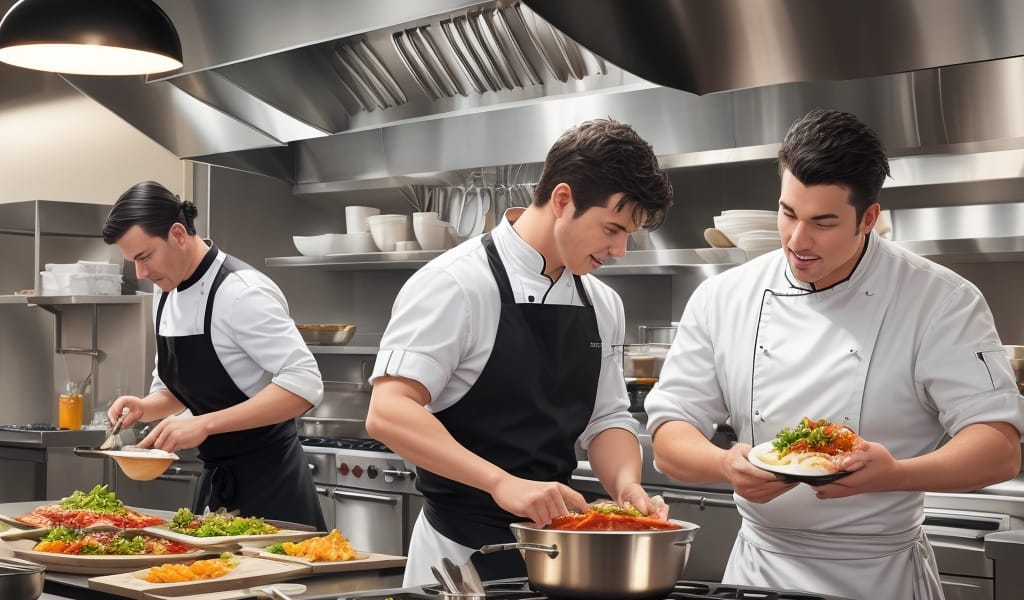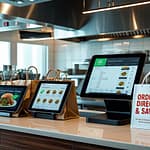Key Takeaways:
- Implement unique, eye-catching elements in your restaurant to encourage customer-generated content on social media.
- Regularly engage with your online audience through comments, likes, and shares to boost your restaurant’s visibility.
- Collaborate with local influencers for promotional content, leveraging their extensive reach for viral marketing.
- Highlight special offers, signature dishes, or unique experiences on your social media channels to attract potential customers.
- Monitor and analyze successful viral restaurant case studies to gain insights and apply similar strategies to your own restaurant marketing.
What Makes a Restaurant Go Viral? Lessons from Real Case Studies
In the competitive world of hospitality, restaurant owners constantly seek innovative ways to stand out. While great food and excellent service remain foundational, the phenomenon of going viral can propel a restaurant into overnight fame. But what exactly makes a restaurant go viral, and how can you replicate that success? In this article, we’ll explore real-world case studies and uncover actionable insights into viral restaurant marketing strategies.
The Power of Social Media: A Game Changer for Restaurants
The rise of social media platforms has transformed the restaurant industry by providing businesses with powerful tools for reaching large audiences quickly. Platforms like Instagram, TikTok, and Facebook offer unprecedented opportunities to showcase unique menu items, interior designs, and engaging customer experiences.
Why Social Media Matters
- Cost-effective marketing with high ROI potential
- Immediate, widespread reach
- Interactive engagement with customers
- Building brand identity and community
Case Study 1: The Cronut Craze at Dominique Ansel Bakery
In 2013, New York City’s Dominique Ansel Bakery introduced the Cronut—a hybrid pastry combining elements of a croissant and donut. Almost overnight, images of the Cronut flooded social media, sparking global curiosity and long lines outside Ansel’s bakery.
What Made the Cronut Go Viral?
- Novelty and Innovation: The Cronut was a unique, never-before-seen pastry, perfect for social media sharing.
- Scarcity: The bakery limited daily production, creating exclusivity and urgency.
- Visual Appeal: Its photogenic quality made it a perfect subject for Instagram.
Actionable Takeaways for Restaurants
- Introduce innovative, visually appealing dishes that encourage customer sharing online.
- Create limited availability or exclusive menu items to drive customer desire and urgency.
- Leverage visually-focused platforms like Instagram to highlight your unique offerings.
Case Study 2: Salt Bae and Nusr-Et Steakhouse
Turkish chef Nusret Gökçe, better known as “Salt Bae,” became an internet sensation after his distinctive salt-sprinkling technique went viral in 2017. The viral video turned Gökçe into an instant meme and dramatically boosted traffic to his restaurants around the globe.
What Made Salt Bae Go Viral?
- Memorable Personality: Gökçe’s flamboyant style was instantly recognizable and easily mimicked.
- Video Content: Short, visually captivating videos easily shared across social platforms.
- Personal Branding: By leveraging his personality, Salt Bae built a personal brand that transcended the restaurant itself.
Actionable Takeaways for Restaurants
- Encourage chefs or staff to develop a unique persona or engaging storytelling style.
- Create short, high-quality videos showcasing your culinary techniques or signature dishes.
- Utilize platforms like TikTok and Instagram Reels to reach broader, younger audiences.
Case Study 3: Black Tap Craft Burgers & Beer – Milkshake Madness
Black Tap Craft Burgers & Beer in New York City gained viral fame through their extravagant milkshakes, called “CrazyShakes.” These over-the-top creations featured elaborate toppings like candy, cake slices, and cookies, rapidly becoming social media sensations.
What Made CrazyShakes Go Viral?
- Visual Drama: Eye-catching, colorful presentations that stood out online.
- Shareable Experience: Customers eagerly posted photos of themselves enjoying these unique desserts.
- Social Media-Friendly Products: The shakes were specifically designed to be Instagram-friendly.
Actionable Takeaways for Restaurants
- Design menu items specifically to be visually captivating and social media-friendly.
- Encourage user-generated content by creating dishes that customers naturally want to photograph and share.
- Implement a branded hashtag to organize and amplify customer posts.
Essential Ingredients for Viral Restaurant Success
Analyzing these successful case studies, we see several common factors that contribute to restaurants going viral. By understanding these elements, restaurant owners and managers can strategically position their business for potential viral success.
Novelty and Originality
Novelty attracts attention. Introducing something entirely unique or creatively reinventing familiar concepts can generate curiosity and excitement among customers, encouraging social sharing.
Visual Appeal and Shareability
Social media thrives on visually striking content. Restaurants must prioritize aesthetics in their dishes, décor, and presentation to encourage customers to share their experiences online.
Engaging Personalities and Stories
Behind every viral sensation is a compelling story or personality. A charismatic chef, engaging staff, or relatable story can make a restaurant memorable and appealing to a broad audience.
Strategic Scarcity and Exclusivity
People desire what they can’t easily get. Creating limited-edition menu items, exclusive dining events, or limited-time offers can significantly boost customer interest and urgency.
Practical Tips for Leveraging Social Media
Beyond understanding these elements, restaurants should actively employ best practices in social media management to enhance their viral marketing strategies.
- Consistency: Regularly post engaging content to maintain interest and increase follower interaction.
- Quality Over Quantity: Prioritize high-quality visuals and engaging captions over sheer posting volume.
- Encourage User-Generated Content: Create incentives or contests encouraging customers to share their experiences.
- Engage Actively: Respond regularly to comments, messages, and reviews to build community and customer loyalty.
Conclusion
Achieving viral fame in the restaurant industry can elevate your business dramatically, driving increased traffic, brand recognition, and revenue. By examining successful case studies, we identify clear patterns: innovation, visual appeal, engaging personalities, and strategic exclusivity. With a focused approach to viral restaurant marketing and strategic use of social media, your restaurant can significantly increase its potential for widespread recognition and success.






Comments
Be the first to comment on this article.